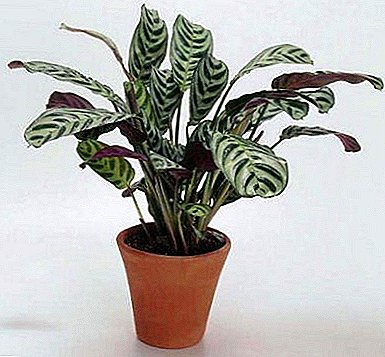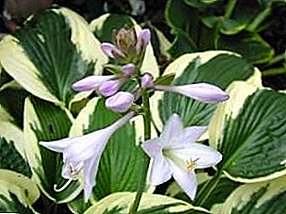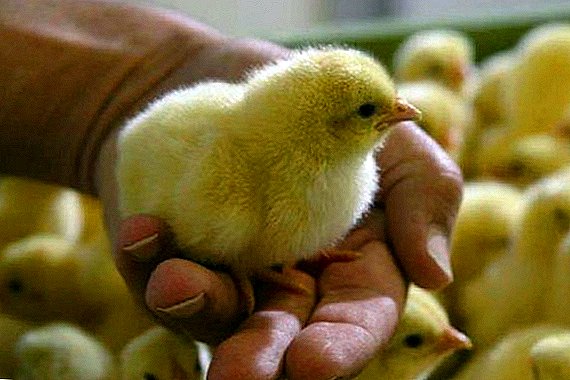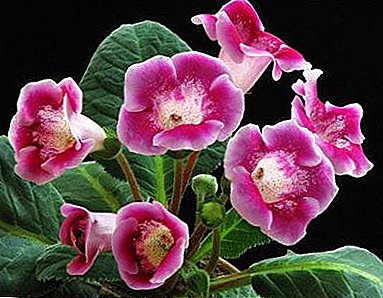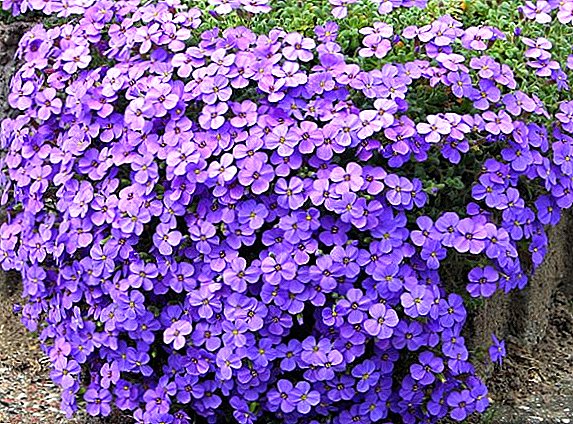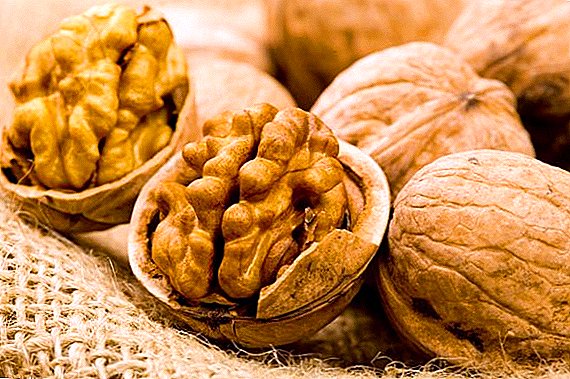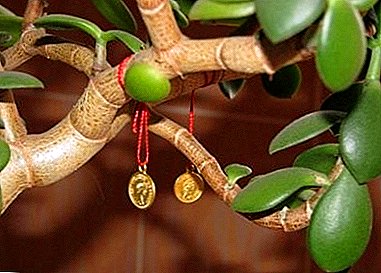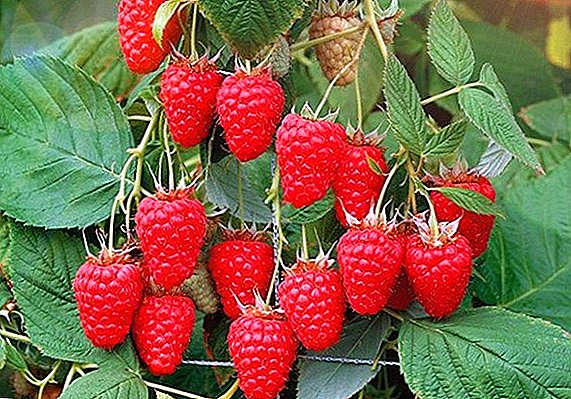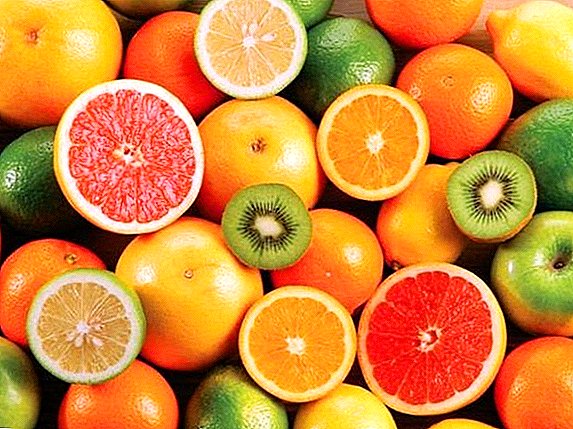
Choosing a winter grade of an apple-tree for a garden, it is important to be guided by its best qualities. It should be winter-hardy, fast-growing and high-yielding.
The Northern Synapse variety has all these virtues. He has been popular with gardeners for many years.
What kind is it?
North Synaph is a late winter variety.. It is adapted for such regions as Central Black Earth, Lower Volga, Middle Volga and East Siberian. Fruit ripeness begins in early October.
Harvested apples ripen two or three months in storage, picking up the taste and acquiring a beautiful look. Fruits are characterized by long-term storage and can retain their taste until the end of spring and even longer.
However, the preservation of winter varieties of apples depends on the conditions provided. It may be any suitable room with the ability to maintain a constant temperature from 0 to 1 ° C and air humidity of about 80%. Fruits peppered with shavings of deciduous trees or wrapped in paper are stored in cardboard or wooden containers.
Pollination
"Northern synapse" is partially self-fertile. To increase yields it is recommended to plant it next to such apple varieties as Antonovka ordinary, Slavyanka, Pepin saffron, Pomon-Chinese.
Description varieties Northern Sinap
It is a strong-growing apple tree with a wide pyramidal and not too thick crown.
The photo depicts an apple tree of the Northern Synapse variety, and for a more precise designation, a detailed description of the tree is given below.
Bark on skeletal branches and trunk gray color. Brown shoots slightly articulated, slightly pubescent and covered with small rare lentils. Medium sized leaves are colored dark green. The edges of the oblong leaves are serrate-ciliated and slightly raised. Pink flowers of an apple-tree of a large size.
Fruits weighing from 90 to 150 g differ in elongated barrel-shaped form.. The peel of apples is smooth and eventually becomes oily. At the time of collection, the coloring of the fruit is greenish-yellow. Ripening in storage, apples get brownish-red barrels (blush).
White with a greenish tinge pulp of apples juicy and fine-grained. "Northern Synapse" has a sweet-sour and slightly spicy taste..
100 g of apples contain 102 mg of vitamin P and 11.5 mg of ascorbic acid. The crop is suitable for all types of processing: harvesting dried fruits, preparing jams, preserves and juices.
A photo



Breeding history
Sort Bred in the middle of the 20th century by the famous breeder S.I. Isaev at the Moscow Biological Station. As early as 1927, I. V. Michurin sent the seeds of the variety Kandil-Kitayka to a scientist to create a winter-hardy variety with apples for long-term storage.
By free pollination of the apple tree sent, the breeder received a new variety, which after 20 years of testing and hard work was called the "Northern Synapse".
Natural growth region
"Northern synapse" is a winter-hardy varietyHowever, it is not recommended for cultivation in areas north of the southern borders of the Moscow region.
This is because the ripening of apples requires a lot of summer heat, which in the northern regions with a short summer may not be enough. At the same time, apples that have not yet reached the desired ripeness, and ripening in the cellar, will not be able to achieve the proper taste and correct appearance. And even two or three months of ripening in the storage will not correct the situation.
Sort recommended for Moscow, Kaluga, Smolensk, Oryol, Saratov, Bryansk, Tula, Volgograd, Oryol, Ryazan regions. In Eastern Siberia, stanzale forms of the Northern Synapse are grown, which are successfully protected from snowy and frosty winters.
Yield
 "Northern synapse" is remarkable for its high yield. Only one tree gives up to 170 kg of apples.
"Northern synapse" is remarkable for its high yield. Only one tree gives up to 170 kg of apples.
Fruits are ready for removal in early or mid-October. Fruiting of a tree comes rather early.
The first apples appear in the fourth year, and even in the second year of life on a dwarf rootstock. With age, the apple tree quickly increases the volume of fruiting. but at too abundant yields apples shrink. This is considered a grade flaw.
Apples "Northern Synapse" should not be plucked ahead of schedule, otherwise they will lose their juiciness and quickly turn up.
Planting and care
The apple tree "Northern Synaph" is actively growing and is rapidly acquiring a wide crown. Therefore, it needs a well-lit and open space away from tall trees. Land for planting should be moisture-absorbing, breathable and fertile with a pH from 5.6 to 6.0. Best loamy or sandy soil.
Fruit tree does not tolerate stagnant water in the soil. If the landing site is low enough, you need to take care of good drainage. It is important that the groundwater level is at a depth of at least 2 meters from the surface of the earth.
The Northern Synapse lands in spring or autumn no later than October 20. However, the most favorable time for planting all trees and shrubs is the period from mid-September to mid-October. If the apple tree is bought before this time, you can temporarily stick it in the garden.
To plant a sapling by all the rules, you must adhere to the following algorithm of actions:

- We dig out the landing pit two weeks or even a month before the landing works. First, carefully remove the turf, and then the top layer of earth, which is the most fertile. Both layers are set aside. Next, choose from the pit another layer of earth (about 30 cm thick) and lay it in the other direction.
The optimal size of the pit is about 80 cm deep and about 1 m wide and long. The distance between vigorous representatives of the variety should be from 6 to 7 meters.
- Loosen a hole with a sharp shovel. We throw to the bottom of the drainage in the form of expanded clay or broken brick. Also at the bottom lay out a layer of sod vegetation down. We mix a fertile layer with rotten manure, wood ash and sheet compost, 80 g of superphosphate and 40 g of potassium sulfateI.
Fill the pit one third of this mixture. The rest of the pit is filled with fertile soil in such a way that a hill is formed up to 20 cm high.
- After two or four weeks, we begin planting an apple tree. Before this, we cut off the damaged tips of the roots of the seedling and for several hours soak the entire root system in the water so that the tree is saturated with moisture.
- We dig a hole at the site of the planting hole corresponding to the size of the roots of the seedling. We form a mound in the center. We drive a peg into it, towering 70-80 cm above the ground.
- Set the apple tree on a mound and evenly straighten its roots. Keeping the seedling on weight, we fill the ground with voids between the roots, and then the hole itself. We place the seedling in such a way that its root neck is on 5-6 cm above ground level.
- Lightly tamp the ground around the tree and use a loop of eight to tie it to a peg. Water the seedling using three or four buckets of water. We mulch the surface of the soil around the trunk with humus or peat.
The Northern Synaph, like any apple of an intense type, needs careful maintenance. In order to get excellent harvest of fruits, it is necessary to water properly, trim in time and fertilize the tree well.

- Watering. With the onset of warm days, it is recommended to water an apple tree at the rate of 2-3 buckets per tree at least 4 times a month. During the period of fruiting and planting flower buds, good watering is especially important. It is carried out through the grooves dug around the trunk, or by sprinkling. After watering or rain, the soil must be loosened and free from weeds.
- Pruning. The Northern Synaph is growing very fast, so only with the help of trimming it is possible to restrain its growth within reasonable limits. This procedure makes fruiting regular and does not allow the fruit to become shallow. Already when planting, the branches of the apple are cut to a third.
In the second year of life, shoots should be cut in such a way that the tree has three tiers of branches. When pruning an adult plant, it is important to ensure that it has only one main conductor. In the first years, shoots are cut off by about 40 cm, and in subsequent years - by 20 cm.
In addition, dry, weak and broken branches are removed. Works on pruning are carried out in the spring.
- Fertilizer. In the spring you need to feed the apple rotted manure or humus. Also, to stimulate growth and fruit formation, it is recommended to apply fertilizers containing phosphorus, boron, nitrogen and nitrate to the soil. A couple of weeks after the end of flowering, it is desirable to fertilize the apple tree with urea (0.5%), and another week with urea in combination with calcium chloride. Winter varieties of apple trees are useful every two weeks to fertilize with calcium salts.
- Wintering. "Northern synapse" withstand the winter. Nevertheless, to protect the tree from too much frost, it is necessary to warm the near-stem circle with a sufficient layer of peat or humus. Spruce spruce branches or a special mesh will protect the trunk of an apple tree from hares and rodents.
Diseases and pests
Sort "Northern synapse" resistant to pests. However, he may be attacked by codling moths, flower beetles or moths. In order to maximally protect the apple tree from voracious insects, it is necessary to carry out preventive measures annually:
- spring cut dry and sore branches, heal wounds on the trunk and branches;
- cultivate between the rows, whitewash the stumps, collect the crook;
- in the spring, treat the forest zone and the tree with special preparations intended for the destruction of pests.
All treatments for the destruction of pests or treatment of diseases should be carried out no later than 30-40 days before the harvest begins.
In adverse years with rainy and cool weather, an apple tree may be affected by powdery mildew and scab:

- Mealy dew. On the shoots, buds, leaves and inflorescences appears greyish-white bloom, which darkens with time.
Shoots stop growing and the formation of ovaries stops. Treatment - treatment with special preparations. Before the foliage blooming - Topaz, after flowering - copper preparations, after harvesting the fruit - Bordeaux liquid.
- Scab. A dark bloom forms on the leaves, after which they fall.
Apples appear cracks, black and gray spots, and the fruits cease to develop. Treatment - wood treatment "fast" in the period of foliage and "Hom" after flowering.
Of course, the Northern Synapse apple tree deserves to grow in your garden. Adjusting the right care for the tree, you can get a rich harvest of apples and feast on them all winter.
This is how North Synapse looks like:


